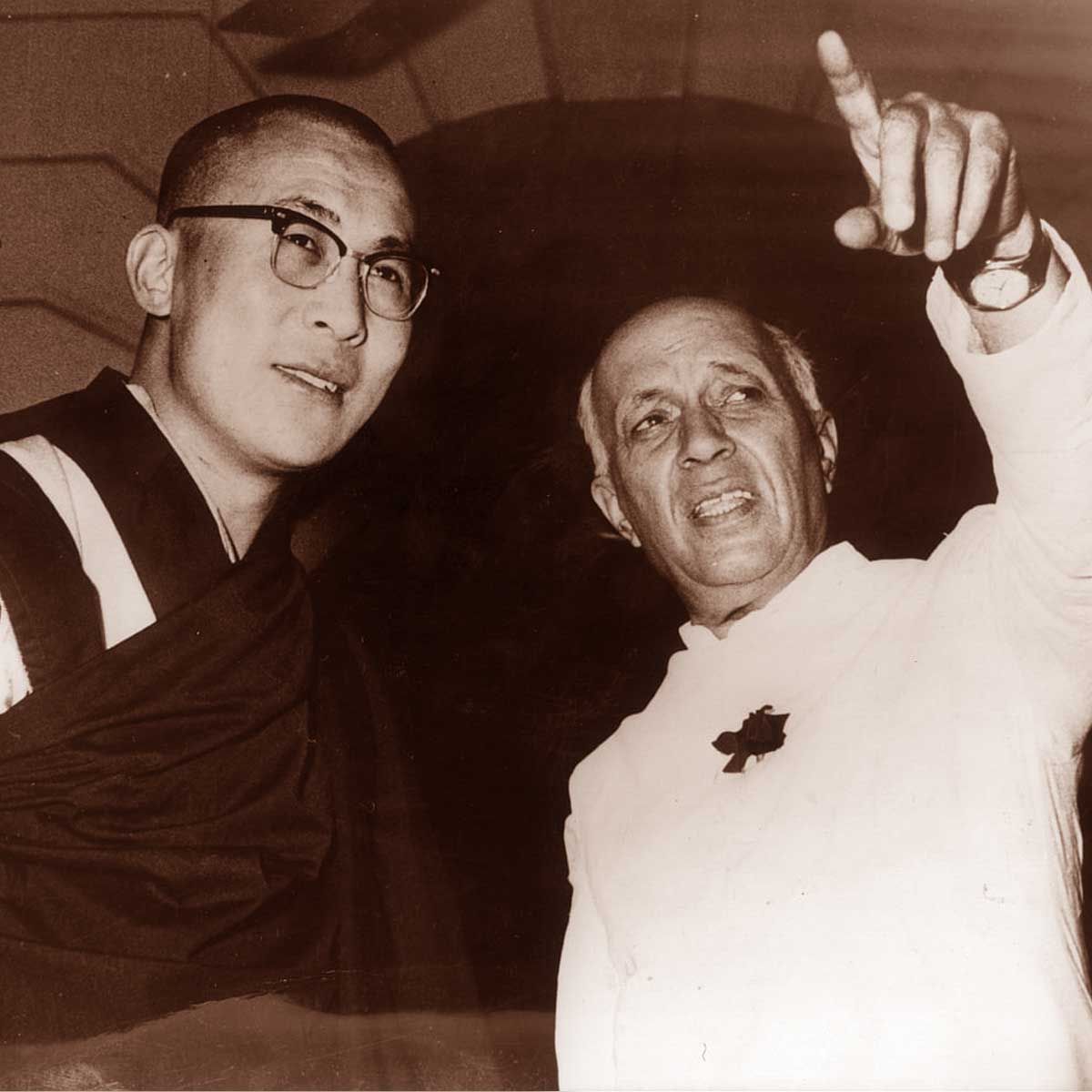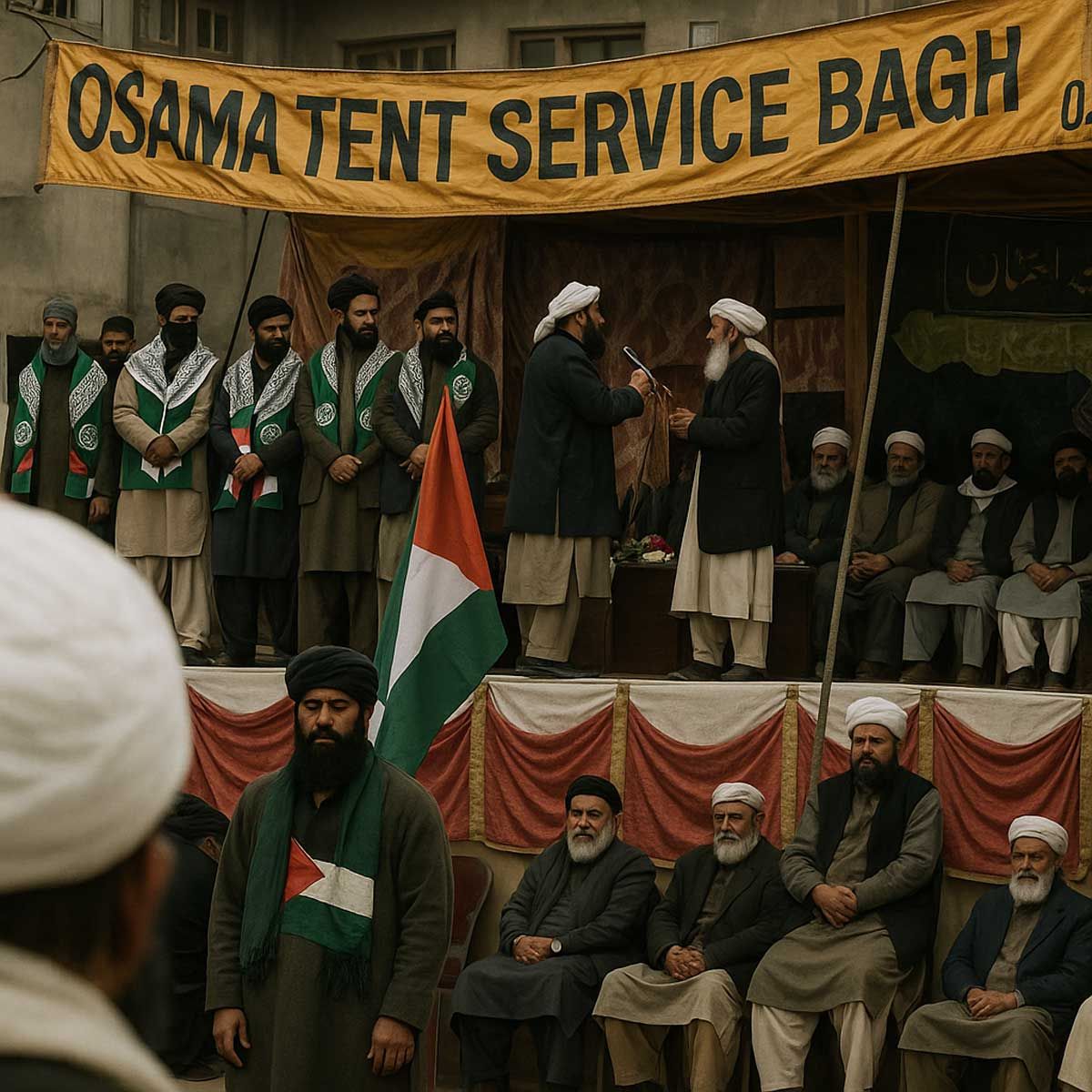Sanatan Articles
Satyaagrah
Written on
Satyaagrah
Written on
Satyaagrah
Written on
Satyaagrah
Written on
Satyaagrah
Written on
JOIN SATYAAGRAH SOCIAL MEDIA
How Nehru's Govt helped China in conquering Tibet and let go of it's centuries old friend

Weeks after India pushed back Chinese troops from the Line of Actual Control along the northern borders, there has been an ongoing debate about the Nehruvian blunders, that has imposed a severe cost on the country and its citizen.
One such Nehruvian idealism, while dealing with the hostile communist China in the 1950s, not only cost India a peaceful ally in the form of Tibet but also enabled the aggressive PLA troops to annex one of the greatest ‘rooftops of the world’ – Tibet, wrote French-born author and historian Claude Arpi.
The Chinese invasion of Tibet, which culminated in the 1962 war between India and China, has often been portrayed as the “Great Chinese Betrayal”—“a stab in the back”, as Jawaharlal Nehru would say with much pain and anguish. Claude Arpi, in his 2017 book, Tibet: The Last Months of a Free Nation, proved with fresh shreds of evidence that the notion of “betrayal” was a farce. It was “a stab from the front”, as M.J. Akbar observed in his eloquent biography on Nehru. For, the then Prime Minister and his comrades refused to see the writing on the wall for more than a decade.
 |
In his latest book, Will Tibet Ever Find Her Soul Again?, Arpi comes up with another explosive revelation: that Nehru’s India supplied rice for the invading PLA troops in Tibet when they were busy rampaging and decimating the Tibetan way of life and culture in the early 1950s. “The most grotesque incident of this period was the feeding of the PLA’s troops with rice coming through India,” writes the France-born expert on Tibet and China who is now settled in India. “Without Delhi’s active support, the Chinese troops would not have been able to survive in Tibet.”
Tibet, before the massive Chinese influx of the 1950s, was a self-sufficient society. The locals had, for centuries, practised sustainable development, and starvation was unheard of. But the PLA avalanche triggered a breakdown in the Tibetan economy. Before the arrival of the Chinese Army in the forbidden kingdom, Arpi writes, few Tibetans had ever eaten rice. Roast barley, known as tsampa, had been their staple food for centuries. “The influx of fresh troops brought the first serious problem in the new co-existence between the Chinese occupants and the Lhasa government: the availability of foodstuff,” he writes.
To overcome the food crisis for the PLA troops in Tibet, Chairman Mao and his comrades looked towards India. SK Krishnatry, the Indian Trade Agent (ITA) in Gyantse, wrote that the Chinese government had requested the Government of India “for an agreement allowing facilities for the transport of food and other supplies through India”.
To overcome the food crisis in Tibet, Chairman Mao and his comrades looked towards India. S.K. Krishnatry, the Indian Trade Agent (ITA) in Gyantse, mentioned that the Chinese government had requested the Government of India “for an agreement allowing facilities for the transport of food and other supplies through India”.
The Chinese government wanted transit facilities for 10,000 tonnes of food grains through India, as a special case. Delhi first agreed after careful consideration to allow the transit of about 3,000 tonnes of rice to Tibet. “While pointing out the transport problems involved in the proposal, the Government of India expressed their (sic) willingness to consider it together with all outstanding issues regarding their position in Tibet,” wrote Krishnatry. Sadly, but not surprisingly, the Tibetan part of the story was soon forgotten.
 |
Nehru was blinded by ideological lenses, duped by Chinese
Prime Minister Nehru, blinded by dark ideological lenses or even duped by China’s “bhai-bhai” chimera, India refused to see the true nature of communist China and its devastating presence in Tibet. It didn’t even grasp that China was hitting out at India when it gave a call in the 17-Point Agreement, signed in May 1951, to “drive out imperialist aggressive forces from Tibet”.
Who were these imperialist forces? “Very few realised then that it could be against India,” Arpi writes matter-of-factly.
This rice diplomacy continued for well over four years. On 20 October 1954, it was re-emphasised that India would continue to supply rice to the PLA stationed in Tibet. “Rice which China would buy was intended exclusively for Tibet, and only difficulties of transport have necessitated this purchase by China,” reported The Hindu then.
One wonders what would have happened had India not sent rice. Would the PLA have consolidated so easily its hold over the Roof of the World?
Ten months later, the first truck would reach Lhasa from the Chinese side. With China supplying rice directly to Tibet, imports from India wasn’t required anymore.
At a time when Indian leadership should have confronted Chinese aggressiveness in China, Nehru pushed his ill-advised rice diplomacy, which not only created hostilities against India within Tibet but also allowed Chinese to consolidate its position in the Tibet. The blunders of Nehru directly allowed China to forcefully annex Tibet, by providing food for the invading troops.
Three important Events
In August 1947, the Government of India inherited the treaties of the British with regard to Tibet. The British Mission in Lhasa becomes India's diplomatic mission. The Government of India made it evident in its correspondence that it regarded Tibet as a de facto country. This was not unique to India, as Nepal and Mongolia also had treaties with Tibet. A few months before India's independence, an Asian Conference was held in New Delhi, to which Tibet was invited. Along with the flags of other countries participating, Tibet's flag was flown.
In August 1950 a Tibetan delegation and representatives of the People's Republic of China sat for negotiations in New Delhi. Following the Chinese annexation of Tibet in October of that year, India sent a note of protest. India’s Deputy Prime Minister Sardar Vallabhbhai Patel wrote, "The tragedy of it is that the Tibetans put faith in us; they chose to be guided by us; and we have been unable to get them out of the meshes of Chinese diplomacy or Chinese malevolence."
In 1954, China and India signed a trade agreement that would regulate the trade between the two countries with respect to Tibet. This trade agreement ended India's centuries-old free trade with Tibet.
 |
China did not inform Nehru govt regarding PoWs
In his book, Arpi further reveals about the saga of four Indian “prisoners of war”, who were caught during the 1950 invasion. Out of the four PoWs, two of them were in the PLA’ confinement for almost two years without the “friendly” Chinese government informing India about them.
What more shocking is that these PoWs were not soldiers or even spies, but were “employed by the Tibetan government and worked under Robert Ford, the British radio operator in Chamdo”. Ford recalled how the four young Indians had been trained to man a wireless station. The fact that China kept them in jails without informing India, should have shown the Indian government that China was not a friend, writes Arpi.
Interestingly, as per Apri, KM Panikkar, India’s ambassador to China from 1950-52, was more aligned to China and acted like Mao’s envoy rather than Nehru’s. Panikkar invariably defended the Chinese acts of omission and commission. Even when the Chinese were caught napping with their wrong, aggressive foot forward, he would defend them.
“The Chinese attitude about these issues has all along been that these arise from unequal treaties and are ‘scars left behind’ by the British,” Apri notes Panikkar’s words. Even as China was trampling on the Tibetan way of life, Panikkar would send a note back home, saying, “Not much news has been appearing about Tibet of late and it is expected that the work of re-organisation there will naturally take time and will be handled with tact and care by the Chinese authorities.”
Panikkar wasn’t alone, however. The most prominent among others being the then Defence Minister, V.K. Krishna Menon, who, according to his biographer T.J.S. George, was such a votary of self-reliance that he refused to import defence equipment and turned the military factories into production lines for hairclips and pressure-cookers.
Akbar takes the story forward when he writes in Nehru: The Making of India, “The Army was convinced that Menon was more concerned about promoting himself than defending his country at home… Even Nehru was perturbed at Menon’s foreign tours. When the Chinese advanced into Ladakh in 1959, the defence minister was in New York and showed no desire to return till Nehru rebuked him.” Shockingly, Menon had allowed a Chinese military mission to tour India’s major defence establishments as late as in 1958.
Will Tibet Ever Find Her Soul Again? is a scholarly work which even a lay reader would find interesting. It’s lucidly written and well argued with a lot of facts sprinkled across the book. The common thread being how India couldn’t see China’s dirty designs even when the latter never tried hiding them, whether it was the closure of the Kashgar consulate and the downgrading of the Lhasa consulate or the Chinese military’s consolidation on the plateau.
References:
sundayguardianlive.com - Utpal Kumar
 Support Us
Support Us
Satyagraha was born from the heart of our land, with an undying aim to unveil the true essence of Bharat. It seeks to illuminate the hidden tales of our valiant freedom fighters and the rich chronicles that haven't yet sung their complete melody in the mainstream.
While platforms like NDTV and 'The Wire' effortlessly garner funds under the banner of safeguarding democracy, we at Satyagraha walk a different path. Our strength and resonance come from you. In this journey to weave a stronger Bharat, every little contribution amplifies our voice. Let's come together, contribute as you can, and champion the true spirit of our nation.
 |  |  |
| ICICI Bank of Satyaagrah | Razorpay Bank of Satyaagrah | PayPal Bank of Satyaagrah - For International Payments |
If all above doesn't work, then try the LINK below:
Please share the article on other platforms
DISCLAIMER: The author is solely responsible for the views expressed in this article. The author carries the responsibility for citing and/or licensing of images utilized within the text. The website also frequently uses non-commercial images for representational purposes only in line with the article. We are not responsible for the authenticity of such images. If some images have a copyright issue, we request the person/entity to contact us at This email address is being protected from spambots. You need JavaScript enabled to view it. and we will take the necessary actions to resolve the issue.
Related Articles
- When Nehru ignored warnings from Sardar Patel and Sri Aurobindo and shocked USA President: Chinese Betryal and loss of centuries old ally
- Prophecies of Jogendra Nath Mandal getting real after seventy years of his return from Pakistan
- China attacked India just three years after PM Nehru reduced the defence expenditure by Rs 25 crores: Union Budget 1959
- Father of the Nation! Absolutely not. Mohandas Karamchand Gandhi was not the father of the nation either officially or otherwise
- Nehru's Himalayan Blunders which costed India dearly - Pre-Independence
- If only India’s partition chilling wound was not enough, Gandhi did his last protest again only to blackmail India into giving 55 crores to Pakistan, dragged Hindu, Sikh refugees seeking shelter in mosques to die in cold: And we call him Mahatma, not for
- Ghost from the past: Unseen picture of Nehru voting in favour of partition of India goes viral
- A Great man Beyond Criticism - Martyrdom of Shaheed Bhagat Singh (Some Hidden Facts)
- Harmonizing Nathuram Godse: Why India should move beyond denouncing him, a man who altered the course of not only the politics of the country but the very history of the Hindu Civilisation and, by extension, the world at large
- The untold story of Maharashtrian Brahmin genocide committed by Congress after Gandhi’s assassination in 1948
- After the death of Narasimha Rao, Congress President Sonia Gandhi did not let his body enter Congress HQ & last rites happen in Delhi, they did not even have the decency to arrange enough firewood for his funeral, his body lay half burnt with intact skull
- Netaji, an Impossible man can never be boxed into an ideological corner: Not just the most enigmatic figure in world history but his life is also a tough lesson in how to think about history
- Mysterious death of the tallest leader Syama Prasad Mookerjee in Kashmir: He was strong critic of Nehru and founder of Bharatiya Jana Sangh (BJP today)
- Speech of Sardar Patel at Calcutta Maidan in 1948 busts the myth of ‘Muslims chose India’ and is relevant even today
- Depth of Soviet penetration in Indian media is exposed through declassified CIA document from 2011





















